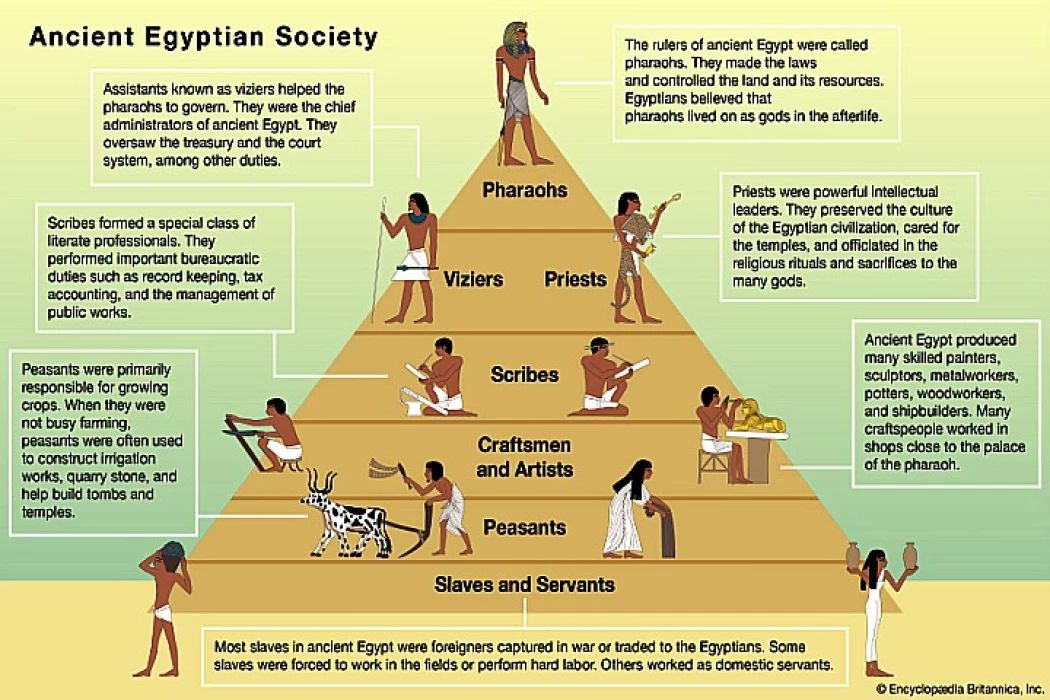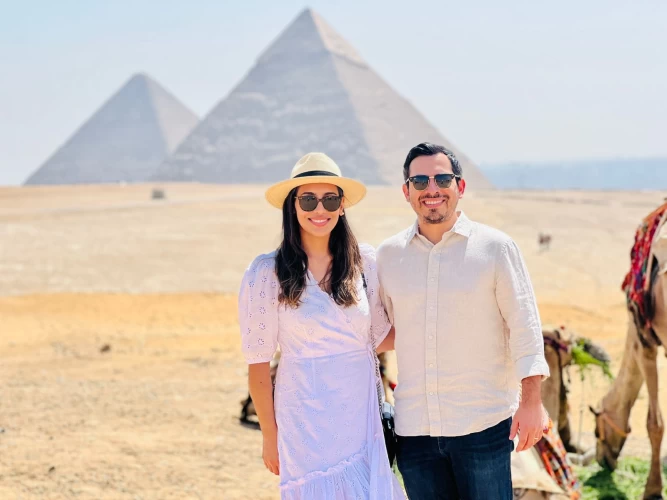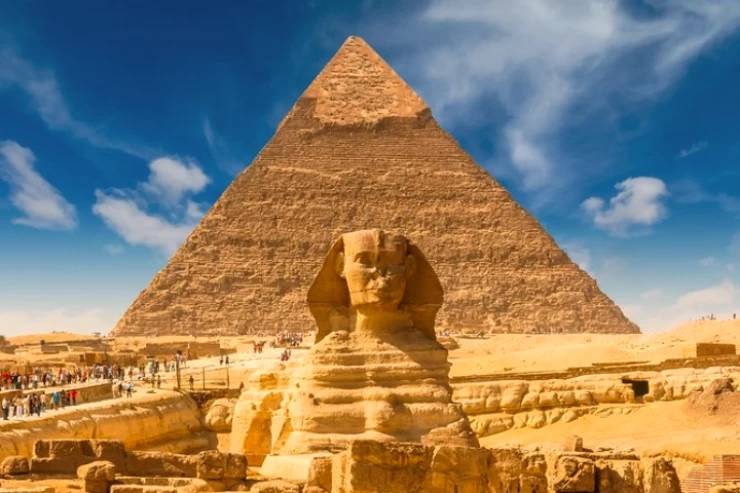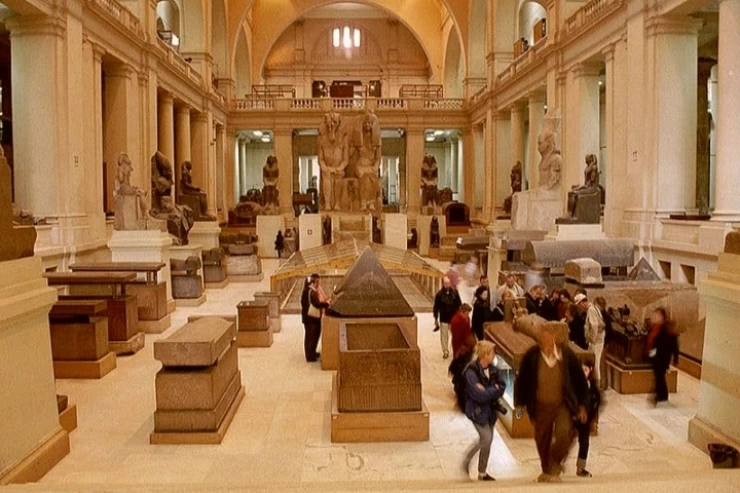
Ancient Egyptian Social Structure
Ancient Egyptian Social Structure
The pharaoh is also considered as the incarnation of a god on earth and is, therefore, the highest religious authority of ancient Egypt. The royal palace is the symbol and political center of the country. The main administrative and religious activities take place in the pharaoh's royal palace.
In addition to being the seat of government and the home of the Pharaoh, the royal palace is also the treasury of the kingdom. The kingdom has three high social classes: priests, nobles, and scribes.
Priests:
Below the pharaoh, in the hierarchical scale of the state, we find the priests, who carry out a very important and influential religious and political activity in the country. Priests officiate in the temples, religious rites, funeral ceremonies, the cult of the dead, and interpret the will of the gods. Despite being subject to the power of the pharaoh, priests enjoy a wide influence on the pharaoh and often play an important political role in the transition from one dynasty of pharaohs to another. Priests are also responsible for administering the cultivation of the lands of the kingdom.
Nobles:
The nobles (warriors) follow in importance, who enjoy immense personal wealth and who are entrusted with the task of administering the provinces of the kingdom in the role of officials. The nobles are entrusted with the task of administering the provinces of the kingdom. The bureaucratic and administrative organization of ancient Egypt is entrusted to the vizier, the prime minister who reports directly to the pharaoh, and to the provincial governors. The nobles also represent the warrior class of Egyptian society. Priests and warriors represent the ruling class of ancient Egypt. Warriors, however, have less political weight than priests.
Scribes:
The scribes are the officials who are entrusted with the task of transcribing administrative and religious texts. In Egyptian society, writing is the absolute monopoly of the scribes. Although subjected to priests and nobles, the scribes represent one of the most influential castes of Egyptian society.
People:
The people and slaves are placed at the base of the social pyramid. The people are made up of peasants, merchants, and craftsmen. Despite being free men, people belonging to the people live in conditions of poverty bordering on subsistence.
Slaves:
The last social layer is finally occupied by slaves. To this last social layer belong the people sentenced to slavery, the prisoners of war, and the populations deported from the conquered territories.
Would you like to experience a journey through ancient Egyptian culture and mythology? you can make it happen and spend a day visiting Abydos, Giza, Luxor, Aswan to see the tombs of the pharaohs adorned with very clear, detailed and beautifully painted scenes of the various deities of ancient Egypt, as well as many other sites, cities, adventures and things to do in Cairo, you can try booking one of our Egypt travel packages and many private guided Cairo day trips from the airport and Egypt day trips to explore the capital of Egypt, Cairo you can check out many of the Egypt itineraries or take one of our complete Cairo day trips, such as:


















